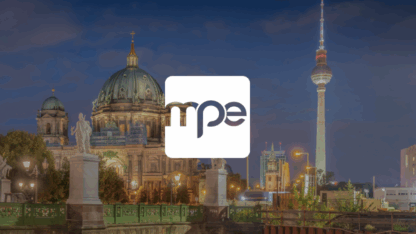What Is Doxxing?
Doxxing (or doxing) is an act of cyber violence in which personally identifiable information (PII or private information) is publicly revealed without consent, typically with malicious intent. This can include an individual’s home address, current location, financial details, workplace or other private data. In the US alone, four percent of Americans — an estimated 11 million people — report that they’ve been victims of doxxing attacks.
How Does Doxxing Work?
In the vast majority of cases, doxxing occurs in an order along the lines of:
- Someone becomes disgruntled or vindictive toward another person in an online format.
- The disgruntled individual may make threats directly to their target or across a broader community.
- The disgruntled individual uses digital intelligence tools to uncover their target’s true identity and other sensitive personal information (PII) about the victim, which they then share online. The perpetrator assumes that the community they are releasing this information will use it for online harassment or intimidation.
- The victim receives a flurry of hostile harassment, such as calls, emails and DMs. This pattern of harassment may even extend to family, friends and their place of employment.
Use effective identity risk management strategies to protect sensitive information from fraudsters. Stay ahead of threats with expert insights.
Read Guide
Common Doxxing Methods
Malicious online behavior has received significant media, particularly concerning the rise of doxxing. Some of the most vindictive doxxing tactics include:
- Exposing financial information sourced from legitimate databases or the dark web and sharing it publicly.
- Sharing private images, messages and conversations without consent from all involved parties — revenge porn is an example of this, but there are several forms it can take.
- Hacking and packet sniffing to gain unauthorized access to data.
- Compromising social media accounts to extract and publish sensitive data
These acts have devastating consequences for victims, often leading to harassment, reputational damage and even real-world threats. In many cases, the doxxer’s primary intent is to incite targeted abuse, making the situation even more harmful.
Is Doxxing Illegal?
The legality of doxxing largely depends on the circumstances, often placing it in a legal gray area. While some regions — such as Hong Kong and the state of Kentucky — have enacted specific anti-doxxing laws, no globally coordinated legislation addresses the practice. However, many actions associated with doxxing, such as stalking, intimidation, fraud and online bullying and harassment, are already considered criminal offenses.
Even in jurisdictions without explicit anti-doxxing laws, perpetrators can still face legal consequences under these related violations. The impact of doxxing can be severe, sometimes irreparably damaging a person’s personal and professional life. As these incidents escalate, the legal repercussions often reflect the extent of harm inflicted on the victim.
Examples of Doxxing
Doxxing goes beyond simply posting someone’s home address online — it can take many forms, carrying serious consequences:
- Unmasking an online alias — Exposing the real identity behind an online alias, user handle or pseudonym and sharing it publicly
- Publicly leaking sensitive information — Disclosing private details with the intent to humiliate, embarrass or damage a person’s reputation
- Broadcasting a victim’s real-time location – Sharing someone’s live whereabouts, potentially putting them in immediate danger
- Exposing personal aspects of someone’s life – Celebrities, journalists and influencers are frequent targets of this tactic
Doxxing is alarmingly widespread, primarily because it’s so easy to execute. A few clicks can turn a personal grudge into a public attack, exposing someone’s private information for harassment or worse. What may seem like a moment of revenge can quickly spiral into real-world harm — making doxxing not just unethical but, in many cases, a criminal offense.
The Consequences of Doxxing
Doxxing can have severe consequences for industries that rely on trust and financial security. When PII is stolen through data breaches or fraudulent activities, it can become a powerful tool for malicious actors to impersonate victims, commit fraud and exploit vulnerabilities in digital platforms.
In the iGaming industry, doxxing can lead to account takeovers, unauthorized withdrawals and bonus abuse, causing significant financial and reputational damage to both users and platforms. Similarly, in eCommerce, exposed PII enables fraudulent transactions, chargeback scams and identity theft, leading to direct financial losses and eroding customer trust.
The risks are even more significant for financial institutions, including digital banks, where leaked PII can bypass identity verification, create fake accounts or gain unauthorized access to economic assets. Such breaches facilitate fraud but can also trigger regulatory compliance failures, leading to hefty fines and legal consequences.
Beyond financial loss, the reputational damage from a doxxing incident can be long-lasting. Customer trust diminishes once a company is associated with significant data exposure, making retention and acquisition even more challenging. In industries where security and reliability are paramount, the fallout from doxxing can be devastating.
You always want to know who your customer really is. SEON’s digital footprint analysis uses our online presence to assess who they are.
Read More
How to Protect Against Doxxing
Doxxing is a serious threat that affects both individuals and businesses. Protecting against it requires a combination of strong cybersecurity practices, privacy awareness and proactive risk management. For individuals, the goal is to minimize personal exposure, while for businesses, safeguarding customer and employee data is crucial to maintaining trust and compliance.
For Individuals: Strengthening Personal Cybersecurity
To reduce the risk of being doxxed, individuals should implement key security measures:
- Use strong authentication and encryption — Enable two-factor authentication (2FA) on all critical accounts, use a password manager and ensure sensitive communications are encrypted.
- Enhance browsing security — Utilize VPNs to mask IP addresses, install antivirus software and be cautious when using public WiFi networks, which can expose personal data.
- Stay vigilant against phishing and social engineering — Avoid clicking on suspicious links, sharing personal details via email or social media or answering unsolicited calls requesting sensitive information.
Beyond cybersecurity, limiting the information shared online is crucial:
- Adjust social media privacy settings — Restrict public access to personal profiles and avoid oversharing details like location, workplace or family connections.
- Be mindful of your digital footprint — Regularly audit and remove old accounts, limit public-facing personal data and opt out of unnecessary data collection.
- Monitor for data leaks — Use tools like Have I Been Pwned to check if your personal information has been compromised in data breaches.
For Businesses: Mitigating the Risk of Doxxing Attacks
Companies, especially those handling sensitive customer data, must take a proactive stance against doxxing. A failure to secure information can lead to fraud, identity theft, financial losses and reputational damage.
- Implement strong data protection policies – Encrypt PII, restrict employee access based on job roles and use zero-trust security models to prevent unauthorized data exposure.
- Strengthen cybersecurity infrastructure – Deploy firewalls, intrusion detection systems (IDS) and endpoint security solutions to defend against cyber threats.
- Train employees on cybersecurity best practices – Ensure staff understands the risks of doxxing, how to recognize phishing attempts and the importance of data privacy.
- Monitor and audit data access – Regularly review access logs and detect unusual behavior that could indicate insider threats or compromised accounts.
- Protect executive and employee information – High-profile executives and customer support staff are frequent targets of doxxing. Businesses should limit the exposure of their employees’ details online and provide anonymization options for public-facing roles.
- Prepare an incident response plan – In the event of a doxxing attack, companies should have a plan to immediately remove exposed information, notify affected individuals and coordinate with legal and cybersecurity teams to contain the damage.
The Business Impact of Doxxing
For businesses, doxxing isn’t just a security issue — it can lead to legal consequences, compliance failures and loss of consumer trust. Industries such as financial services, eCommerce, and iGaming are particularly vulnerable, as exposed PII can result in:
- Account takeovers and fraudulent transactions – Criminals can exploit leaked PII to bypass security measures and steal funds.
- Regulatory fines for mishandling sensitive data – Data privacy laws like GDPR, CCPA and PCI-DSS impose strict penalties for failing to protect customer information.
- Brand damage and customer churn – Once a company is associated with a doxxing-related breach, user confidence declines, making retention and acquisition significantly harder.
By investing in strong cybersecurity measures and adopting a culture of data privacy, companies can protect their customers and employees from the devastating impact of doxxing. Staying ahead of evolving threats requires constant vigilance, employee education and adaptive security strategies — because prevention is always better in today’s digital landscape than crisis management.
Sources:
- Safe Home: Doxxing Statistics in 2024: 11 Million Americans Have Been Victimized
- Global Privacy & Security Compliance Law Blog: Hong Kong’s Anti-Doxxing Laws — the State of Enforcement One Year On
- Fast Company: Doxxing a Minor








